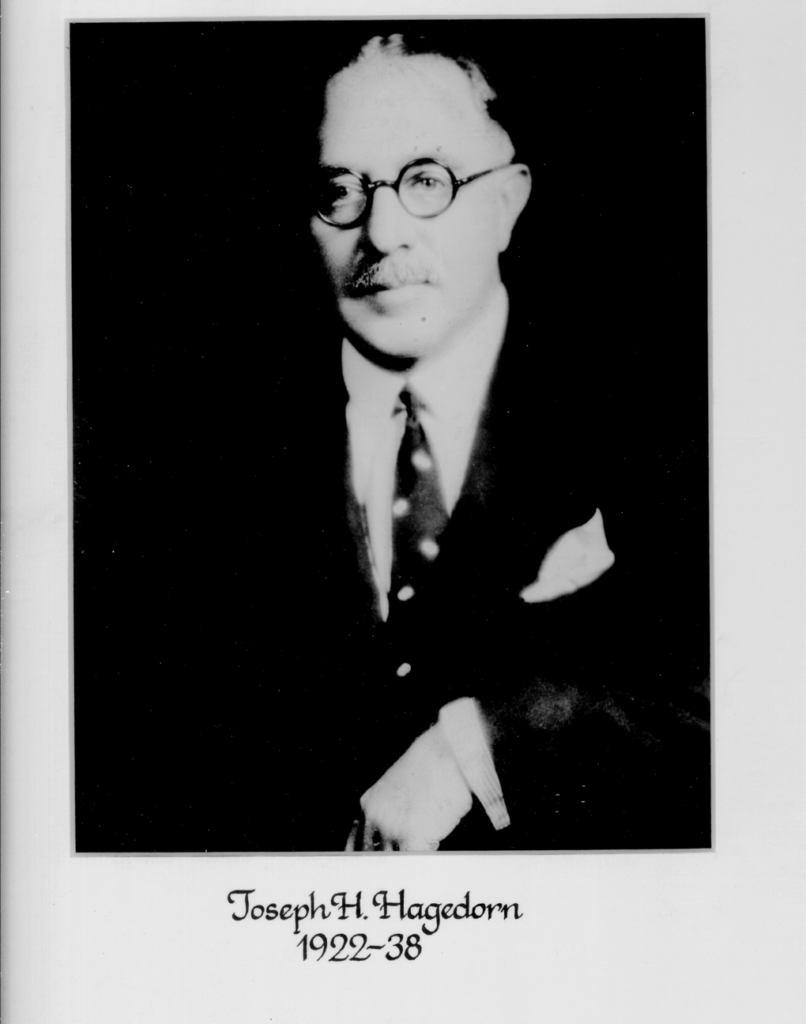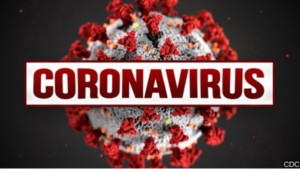Joseph H. Hagedorn
(17)
1922-1938

Joseph H. Hagedorn served as Keneseth Israel’s seventeenth President for sixteen years, from 1922 to 1938. Early in Hagedorn’s tenure, Rabbi Krauskopf, a giant in the Jewish community, became ill and died on June 12, 1923 after serving for over 36 years as senior rabbi of Keneseth Israel. Hagedorn hired Rabbi Dr. William H. Fineshriber as the new senior rabbi. Rabbi Fineshriber was a graduate of Hebrew Union College and had previously held a pulpit in Tennessee. He was Keneseth Israel’s first American-born rabbi. Hagedorn also brought in Rabbi Julian Feibelman as the new assistant rabbi after Rabbi Feldman left in 1925. Rabbi Fineshriber brought back the position of cantor, hiring Benjamin Grobani in 1928 to fill the position, and led the congregation in switching Rabbi Krauskopf’s prayer book to the Union Prayer Book, compiled by the Central Conference of American Rabbis, in order to bring Keneseth Israel in line with other Reform congregations across the nation.
The congregation continued to grow during these years and was compelled to reduce overcrowding in the religious school by opening a branch in the northern suburbs, where many members were beginning to move as part of a larger pattern of Jewish migration in the Philadelphia region. Keneseth Israel also maintained its leadership position in the Reform movement, jointly hosting the regional conference of the Union of American Hebrew Congregations with Rodeph Shalom in 1931. That same year, Bar Mitzvah ceremonies were reinstated at Keneseth Israel, and Bertram Wallace Korn, future rabbi of the congregation, became one of the first b’nai mitzvah. During the Great Depression, Keneseth Israel established an emergency fund to aid community members. In 1934, Albert Einstein was elected the congregation’s first honorary member and gave an address at the annual meeting that same year. And in 1937, Keneseth Israel celebrated its 90th birthday.
Joseph H. Hagedorn was born on March 4, 1873 in Philadelphia. He worked for his family’s shirtwaist manufacturing business, and was a civic leader in the city. He served for a time as chairman of the board of the Philadelphia Housing Association, was a member of the Philadelphia Committee on Public Affairs, a trustee of the Bureau of Municipal Research, Vice President of the Public Education and Child Labor Association, Director of the City Club, and was the municipal director of supplies and purchases in the administration of Mayor J. Hampton Moore from 1932 to 1936. During World War II, Hagedorn served as Fair Price Commissioner of Philadelphia.
Hagedorn was also active in Jewish communal life. He joined the Board of Directors of the Federation of Jewish Charities in 1904, shortly after the organization’s founding. He served as chairman of the board of the National Agricultural College – also known as the National Farm School, where he was also director of supplies and purchases – in addition to Keneseth Israel. In 1939, during the Union of American Hebrew Congregations’ layman’s tour of 250 cities in the US and Canada, Hagedorn was the state tour chairman. The layman’s tour was the kickoff for the Union’s “10-year program of increased personal service to democracy and Judaism.”
Joseph Hagedorn was married twice, first to Estelle Hagedorn, born Fleisher, and then to May H. Hagedorn. He had two daughters, Alice – later Alice Silverman – and Estelle, and one son, John J. Hagedorn. He lived at 8128 Brookside Road in Elkins Park. In 1949 he died from a cerebral hemorrhage related to heart disease, and was buried at Mount Sinai Cemetery.

